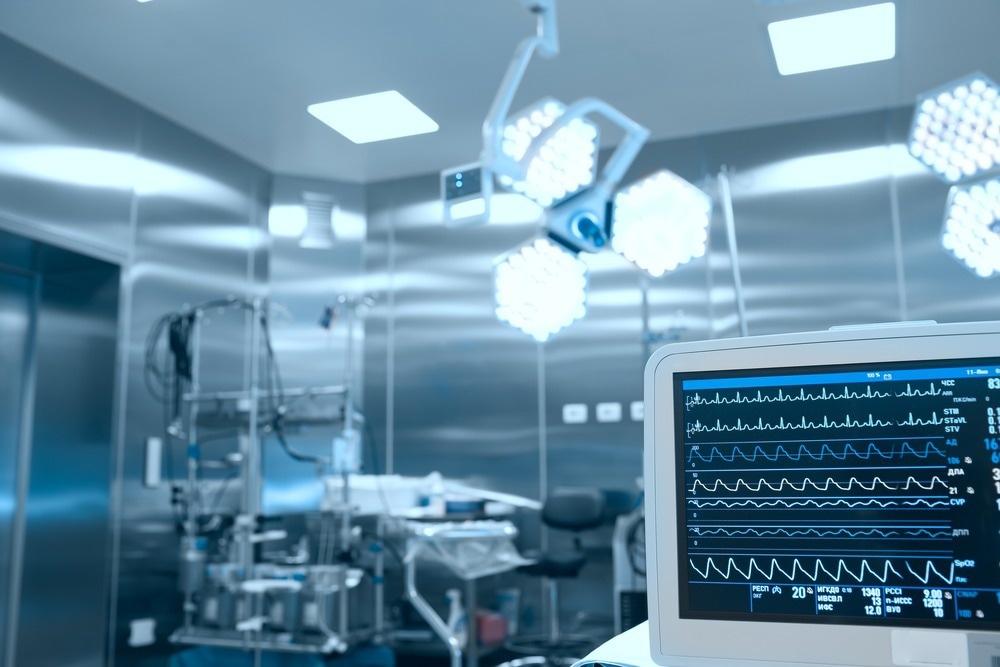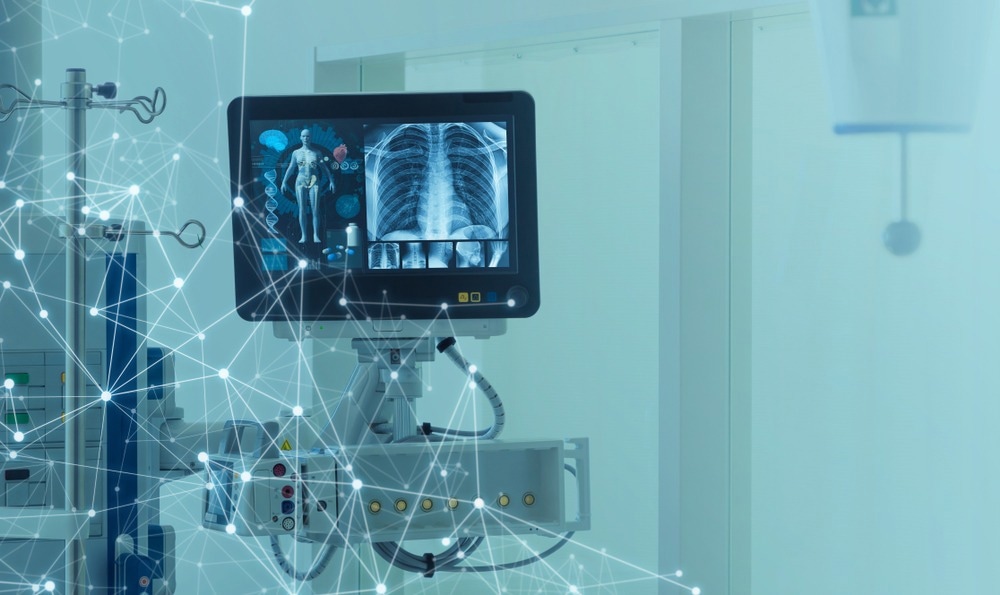For SLAS US 2023, we speak to Guy Starbuck, one of the co-founders at AIQ Global, about how we can utilize AI technology to bring new medical devices to market.
Please could you introduce yourself and tell us what inspired your career within the life sciences?
I’m Guy Starbuck, Co-Founder and CTO of AIQ Global. I have a background in commercial software development and have been working in medical device development for the last 15 years.
I find working with medical devices to be very rewarding – it’s a great feeling to go home at the end of the day and know that the work you do has the potential to have a direct, positive impact on people’s lives.
You are the Co-Founder and CTO of AIQ Global, a company enabling clinicians to make better-informed therapy decisions. Please can you tell us more about AIQ and its mission?
AIQ Global is changing how clinicians manage complex diseases, such as metastatic cancer, to extend and improve patients’ lives. AIQ’s software technology uses information from radiological scans to assess how individual patients will respond to specific treatments. Oncologists are using AIQ’s TRAQinform IQ technology to make more confident treatment decisions, personalize patient care, and improve treatment outcomes.
AIQ spun out of the University of Wisconsin-Madison Department of Medical Physics and the Carbone Cancer Center. We received FDA clearance for our TRAQinform IQ technology in 2018 and now have a team of over 30 people in the US and Australia.

Image Credit: PopTika/Shutterstock.com
You are also helping to reduce healthcare costs by providing intelligence surrounding the heterogeneity of treatment responses for complex diseases. How are you able to do this, and how does this contribute to the reduction in healthcare costs?
Treating cancer is challenging, particularly in the case of late-stage, metastatic disease. Metastatic lesions can be numerous, numbering as many as several hundred per patient, and each lesion can respond differently to treatment (termed response heterogeneity). Once an oncologist initiates a treatment regimen, they are faced with the following questions: Is this patient responding favorably to this therapy, and if so, how long will that continue? Is this treatment doing more harm than good in terms of damage to vital organs? Is the financial cost of this therapy worth the potential benefit? They revisit these same questions every few months to decide whether an individual should remain on therapy or switch to a different treatment plan.
Repeated radiological imaging provides critical information about how the patient responds to treatment. In current standard practice, only a subset of lesions (usually 3-5) is monitored because radiologists must manually outline (or “segment”) and measure each lesion. However, published studies have demonstrated that resistance in less than 10% of lesions can drive a poor overall clinical outcome. It is impractical for that time-consuming process to be completed for all lesions. Therefore, oncologists are forced to make clinical decisions without having all the information.
Because our technology is not a diagnostic device, we must refer to the spots detected on scans as “regions of interest” rather than “lesions.” AIQ’s TRAQinform IQ technology automatically identifies and measures each region of interest on individual scans. We then can automatically match these regions of interest between scans and measure their change over time. This technology can potentially provide economic value to the healthcare system by extending the duration of first-line therapies, which are significantly less expensive than second and third-line options, and avoiding expenditures on ineffective therapy options.
Currently, developing new medical technology and bringing medical devices to the market is extremely challenging. Why is this?
Medical devices are heavily regulated. Developing medical device technology requires a high level of rigor, with detailed requirements for documentation of the entire design and manufacturing process to manage safety and effectiveness risks. Regulatory bodies (for example, the FDA in the US and TGA in Australia) must clear medical devices before they can be sold. The process requires the submission of evidence of compliance with applicable regulations and regular audits.
The second big challenge in bringing a medical device to market is the complexities of reimbursement, especially in the United States. Without reimbursement, it’s much harder for physicians to use the product since the costs need to be absorbed by the health system or paid for by the patient.
The third challenge is making the device available to physicians as part of their standard set of tools. Our product, TRAQinform IQ, is a cloud-based system that processes 3D medical images such as PET/CT scans. The scans reside in the hospital, so we need to integrate with hospital networks for data transfer. In addition, we need to integrate with electronic medical record systems to make it easy for physicians to access our reports. These integrations all require customization for individual hospital systems to match their individual workflow implementations and security configurations.

Image Credit: sfam_photo/Shutterstock.com
AI has gained increased attention in recent years, and its potential role in healthcare grows daily. How important do you feel AI is to the healthcare sector, and where do you see it making the most impact in patient care?
We have seen a lot of benefits in using AI to perform tasks that are complex, time-consuming, and require attention to detail. While radiologists could contour all the bones, organs, and diseases in a patient and then match every lesion manually between two scans, it’s impractical and just not done. Additionally, there can be significant variability in results between radiologists. By using AI for these tasks, we can provide consistent results that oncologists can use to make more confident and cost-effective treatment decisions resulting in better patient care.
You are giving a talk at SLAS 2023 titled ‘The Path from Research to Medical Device- Commercializing AI in Medical Imaging’. Can you tell us more about what you will discuss in this talk and what readers can expect to learn?
In my talk, I will go over the story of how AIQ went from a research project consisting of a patent and a set of code scripts to an FDA-cleared commercial software medical device. I’ll cover the order we performed specific activities and how we have structured and grown our team.
My intent is to help researchers with a proof-of-concept with market potential navigate all of the complexities and provide a concrete roadmap for staffing, fundraising, and commercialization.
Can you tell us more about your TRAQinform platform and its applications within healthcare?
TRAQinform IQ is a software medical device hosted in a HIPAA-compliant, secure cloud environment. The technology applies AI and advanced image processing algorithms to standard-of-care medical images to provide clinicians with comprehensive reports that they can use to tailor treatment regimens and optimize outcomes.
Are you hopeful that with continued support for AI in the medical sector, we will soon see it becoming more commonplace in clinical settings? What would this mean for both hospitals and the patients themselves?
AI is poised to be a huge component of healthcare in the future – there’s an immense amount of research going on right now, and the FDA now has well-established guidelines for getting approval for AI in medical devices. As AI tools and techniques mature and become easier and safer to implement, this trend will only increase – and has the potential to benefit everyone by improving access to speedy, high-quality healthcare information.

Image Credit: metamorworks/Shutterstock.com
You are working in an exciting field, with new advancements being made at an incredible speed. What inspires you most about working in this field, and what are you most looking forward to in the coming years?
I am thankful to have the opportunity to work in the medical field and to be part of a company that is doing concrete work to extend lives and make a real impact on patient care.
Being part of a cutting-edge medical device startup is appealing to many people, and we’ve assembled a dedicated team of top people across many disciplines.
What is next for you and AIQ Global? Are you involved in any exciting upcoming projects?
We are constantly finding new and exciting applications for our technology – one that we’re focusing on right now is theranostics, the combination of therapy and diagnostics. Theranostics is rapidly expanding and can be extremely effective. However, it is expensive ($260,000/patient), and key challenges exist, such as identifying which patients would benefit from treatment, optimizing the therapeutic dose, and monitoring treatment response. Our technology is able to provide oncologists with explicit data about the potential effectiveness of theranostics for each patient.
Our science team, led by Dr. Tim Perk, has many more innovations in the pipeline!
Where can readers find more information?
About Guy Starbuck
In 2016 I had the opportunity to co-found AIQ Global, a software medical device startup spun out of the University of Wisconsin – Madison, with my fellow co-founders Dr. Robert Jeraj, Dr. Glenn Liu, and Dona Alberti. We received FDA clearance in 2018, at which point we hired a CEO, Eric Horler. We have grown steadily and now have over 30 employees in the US and Australia.
As CTO at AIQ Global, I developed the initial prototype of the software, helped create our Quality Management System, and drove the effort for our successful FDA clearance. I’m currently the head of Engineering, IT, and Production, focusing on enabling the company to deliver new products and features, strategic growth and scalability, as well as managing integrations and security compliance.